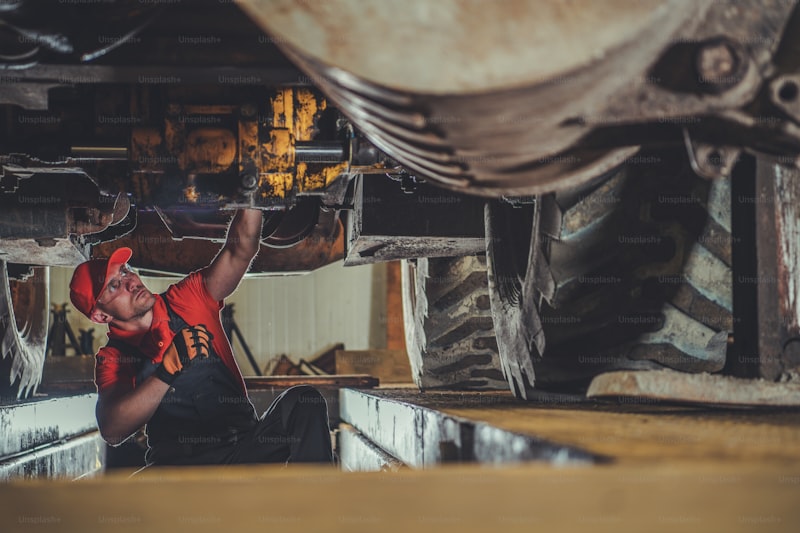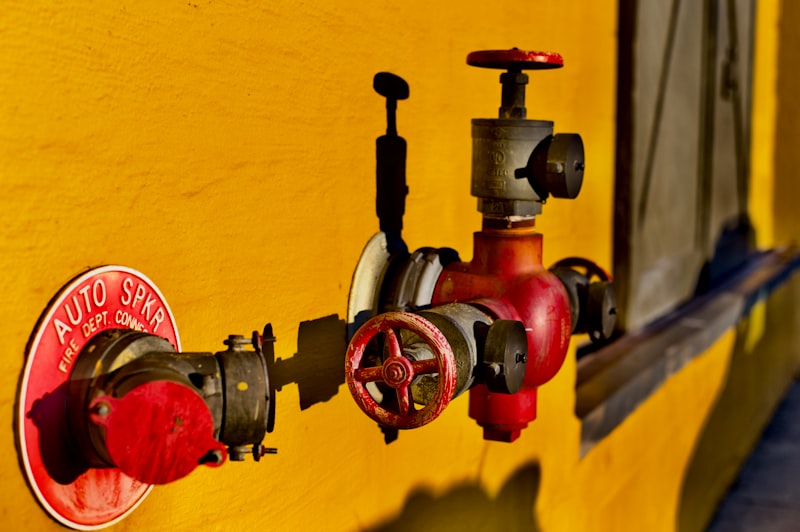Are you experiencing transmission problems after replacing your CV joints? Don’t worry, you’re not alone. Many car owners encounter issues with their transmissions following a CV joint replacement. In this article, we’ll delve into the possible causes of these problems and provide some insights on how to address them effectively.
One common issue that arises is a loss of power or difficulty shifting gears. This could be attributed to improper installation of the CV joint, resulting in misalignment or damage to the transmission components. It’s crucial to ensure that the CV joint is installed correctly, following the manufacturer’s specifications and using proper tools. If you suspect an installation error, it’s advisable to consult a professional mechanic to rectify the problem.
Another potential problem is a leaking transmission fluid. When replacing CV joints, it’s essential to disconnect the axle shaft from the transmission. Mishandling this process can lead to damaged seals or gaskets, causing fluid leaks. Low levels of transmission fluid can result in gear slippage, overheating, and even irreparable damage to the transmission system. If you notice any fluid leaks, it’s imperative to have them addressed promptly by a qualified technician.
Furthermore, vibrations during acceleration or abnormal noises could indicate an issue with the CV joint replacement. These symptoms may suggest an imbalanced driveshaft, loose bolts, or a faulty CV joint. Neglecting these warning signs can lead to severe damage to the transmission system over time. Seeking professional assistance is crucial to diagnose and resolve such problems before they worsen.

Experiencing transmission problems after a CV joint replacement requires immediate attention. Whether it’s a loss of power, fluid leaks, vibrations, or unusual sounds, addressing these issues promptly will help prevent further damage and ensure the longevity of your vehicle’s transmission. Remember, a well-installed and properly functioning CV joint is vital for the overall performance and safety of your car. If you’re unsure about the cause of the problems, it’s always best to consult a knowledgeable mechanic who can provide expert advice and assistance tailored to your specific situation.
Picture this: you’re cruising down the open road, wind in your hair, enjoying the freedom that comes with a smooth ride. Suddenly, a subtle thumping noise disrupts the harmony, and your car starts to shake. It’s a nightmare scenario for any driver, and it’s likely you’re experiencing a CV joint problem.
CV joints, or constant velocity joints, play a crucial role in transmitting power from the transmission to the wheels while allowing for smooth and flexible movement. However, when these components fail, they can cause some unexpected challenges during replacement.
One of the biggest hurdles is accessing the CV joint itself. Tucked away within the intricate network of the drive shaft, it requires disassembling multiple components before reaching the culprit. This process can be time-consuming and requires expertise to avoid damaging other vital parts.
But wait, there’s more! Once you’ve successfully located the problematic CV joint, removing it can be quite a task. Sometimes, these joints stubbornly cling to their positions, making it necessary to use specialized tools or a bit of elbow grease. Patience and finesse are key here, as forcing the removal can lead to further complications.
Now that the old joint is out, it’s time for the new one to take its place. However, installation is not as simple as fitting a puzzle piece. It demands precision and attention to detail. Improper alignment or securing can result in reduced performance and premature wear, rendering all your efforts futile.
Furthermore, after replacing a CV joint, proper lubrication becomes paramount. Greasing the joint ensures smooth operation and longevity. Failure to do so can lead to excessive friction, overheating, and ultimately, another round of repairs.
CV joint replacement presents a set of unforeseen transmission woes. From the intricate disassembly process to the delicate installation and the necessity of correct lubrication, each step demands care and expertise. So, if you find yourself facing CV joint troubles, it’s wise to seek the assistance of a qualified professional who can navigate these hidden challenges with finesse.
Transmission Troubles Loom After CV Joint Replacement: What Car Owners Need to Know
So, you’ve recently had your CV joint replaced in your car. That’s great! It’s an important part of your vehicle’s drivetrain that helps transfer power from the engine to the wheels. But here’s something you need to be aware of – transmission troubles may loom after this replacement. Don’t worry, I’m here to guide you through what you need to know.
When you replace the CV joint, it requires removing the axle shaft connected to the transmission. During this process, there is a possibility that the transmission fluid can leak or get contaminated. The transmission fluid is crucial for proper lubrication and cooling of the transmission components. If it gets compromised, it can lead to transmission problems down the road.
One common issue that car owners might face is shifting problems. You may experience difficulty in shifting gears or notice delayed engagement when you accelerate. This could be a sign that the transmission fluid needs attention. If you encounter such issues, it’s important to have your transmission checked by a qualified mechanic as soon as possible.
Another potential problem is overheating of the transmission. As mentioned earlier, the CV joint replacement process can potentially cause fluid leaks or contamination. If the fluid level drops or if it becomes dirty, the transmission can overheat, leading to damage and reduced performance. Keep an eye on your vehicle’s temperature gauge and pay attention to any signs of overheating such as burning smells or fluid leaks.
To avoid these transmission troubles, it’s crucial to ensure that the CV joint replacement is performed by a skilled technician who follows proper procedures. Additionally, regularly checking the transmission fluid level and condition can help detect any issues early on.
While a CV joint replacement is necessary for maintaining the optimal performance of your vehicle, it’s essential to be aware of potential transmission troubles that may arise afterward. By staying vigilant and addressing any problems promptly, you can avoid costly repairs and keep your car running smoothly on the road. Remember, taking care of your transmission means taking care of your vehicle’s longevity and your own peace of mind.
Gearbox Glitches Galore: The Aftermath of CV Joint Replacement Revealed

Introduction:
So, you’ve just replaced the CV joint in your gearbox, thinking that your vehicle’s performance issues would vanish into thin air. But hold on! Are you experiencing unexpected glitches post-replacement? Don’t panic just yet. In this article, we’ll delve into the aftermath of CV joint replacement and unravel some common issues that might be lurking under the hood.
Unveiling the Culprits:
-
Uneven Acceleration:
One of the common hiccups after a CV joint replacement is uneven acceleration. You may notice your vehicle struggling to pick up speed smoothly. Why does this happen? Well, during the replacement process, if the new joint is not properly aligned or lubricated, it can result in friction and uneven torque distribution. It’s crucial to double-check the installation to ensure proper alignment for a seamless driving experience. -
Mysterious Noises:
Have you started hearing unusual clunking or clicking noises coming from your gearbox area? This could be another side effect of CV joint replacement gone wrong. Improper installation or using low-quality replacement parts can lead to misalignment, which generates those annoying noises. Seek professional assistance to diagnose and rectify the issue promptly. -
Vibrations and Shudders:
Feeling vibrations or shudders while driving? These unsettling sensations might indicate an underlying problem in the CV joint replacement. If the joint isn’t securely fastened or lacks proper lubrication, it can cause vibrations that resonate throughout the drivetrain. Ignoring these signs can lead to further damage, so have it inspected by a qualified mechanic without delay. -
Premature Wear and Tear:
It’s disheartening when you discover premature wear and tear on your newly replaced CV joint. This can occur due to various factors, including poor quality replacement parts or excessive stress placed on the joint during installation. Regular maintenance, correct torque specifications, and using high-quality components can help prevent premature wear and prolong the life of your CV joint.
Conclusion:
Revamped Wheels, Sluggish Gears: A Deep Dive into Post-CV Joint Replacement Transmission Issues
So, you’ve recently had your CV joint replaced, and you were excited to hit the road with renewed confidence. However, you’re now experiencing some unexpected transmission issues. What could be causing this inconvenience? Let’s take a closer look at post-CV joint replacement transmission problems and uncover their possible causes.

One common problem that arises after replacing the CV joint is sluggish gears. You may notice a delay in acceleration or a lack of responsiveness when shifting gears. This can be frustrating, especially if you were expecting smoother performance after the repair.
The culprit behind these sluggish gears could be an improper installation of the CV joint itself. If the joint isn’t installed correctly or if the wrong type of joint is used, it can negatively affect the transmission’s functionality. Additionally, if the transmission fluid was not properly refilled or if there is a leak, it can lead to inadequate lubrication and cause gears to shift less efficiently.
Another potential cause of post-CV joint replacement transmission issues is damaged or worn-out transmission components. The process of replacing the CV joint involves dismantling various parts of the transmission system, such as the axle shafts and differential. If these components are not properly reassembled or if they were already compromised before the repair, it can result in irregular gear shifting.
Furthermore, when performing a CV joint replacement, it is essential to inspect and replace any worn-out or damaged transmission mounts. These mounts provide stability and support to the transmission system. If they are not addressed during the repair, it can lead to excessive vibrations and misalignment of the gears.
While a CV joint replacement can improve the performance and reliability of your vehicle’s drivetrain, it can also introduce new challenges if not done correctly. Sluggish gears and other transmission issues may arise due to improper installation, inadequate lubrication, damaged transmission components, or neglected transmission mounts. If you’re experiencing these problems after a CV joint replacement, it is crucial to have your vehicle inspected by a qualified mechanic who can identify and rectify the underlying issues.
Remember, proper maintenance and attention to detail are key to ensuring a smooth ride and avoiding any unforeseen complications with your transmission system. Stay vigilant, address issues promptly, and enjoy the road ahead with confidence!